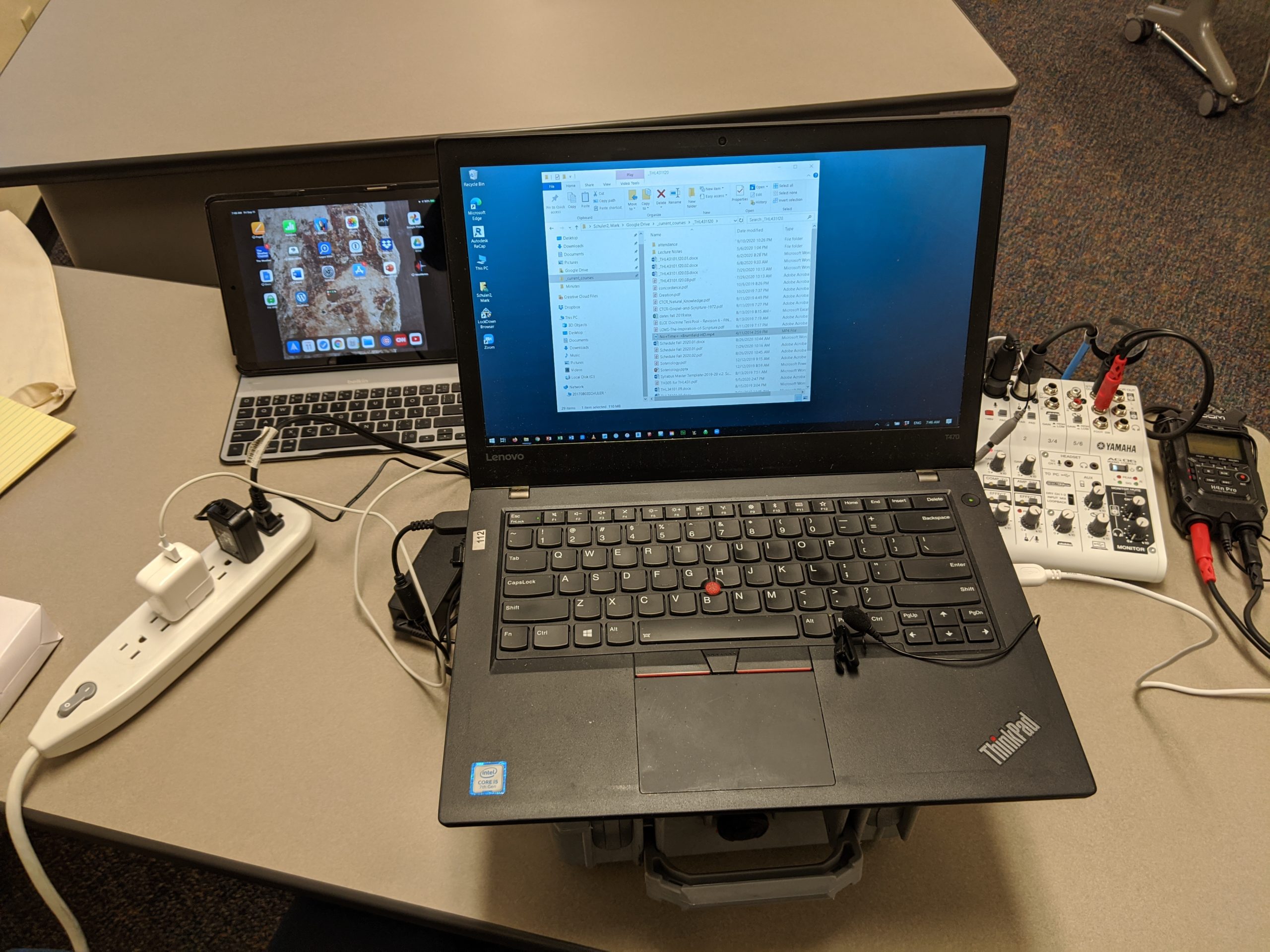Thinking about the future
Approaching this fall, I faced the challenge of teaching in such a way that I could move easily between f2f and online and support students who might be out for a positive COVID-19 test or a quarantine. I also wanted to support students who might be uncomfortable coming to the classroom.
In addition, although the university promised to observe CDC guidelines for physical distancing in the classroom, I was quite sure such would not be possible with our need to keep enrollments high (for financial reasons) and our promise to open f2f in the fall. [Indeed, one of my classes this fall had 18 students in a room for 24 students with most students sitting with two persons at a 5 ft table.]
So I decided to teach using multi modalities simultaneously. Students could choose to attend class f2f or remotely and move freely between the two modalities. The technology is discussed in previous blog posts.
I have also reshaped my classes to be flipped in form, with most lecturing pre-recorded and class time devoted to exploring and working with course content. When I do lecture, I use the Zoom whiteboard projected in the classroom so that both remote and f2f students see the same thing. I was also hoping that sufficient numbers would choose to participate remotely allowing me to then keep f2f students 6 ft apart.
By midterm I am happy to report that on most days half or more of each class is remote, students in the classroom are sufficiently distanced, and I have been able to serve
- a first-generation college student from a multi-generational household afraid the student might bring the virus home
- a mom who had trouble arranging for her son to get care so she could attend class one day a week
- three students who came down with COVID-19, one of whom is a long-hauler and will to be back this term
- four other students quarantined
- three students at a distance who had decided not to come back to the university this fall.
I have run three cycles of written feedback by students on the course mechanics (every two weeks) and have received unexpectedly positive feedback.
Teaching classes in a flipped and multi-modality way seems to be a successful way to serve students during the pandemic.
But it also seems to me that this approach may be appropriate for education the other side of the pandemic. A flipped and multi-modality approach would let me continue to serve the varied circumstances within which students will be seeking education in the midst of highly complex lives.
I can do this and at a relatively low cost. But will the university make such an approach possible?
